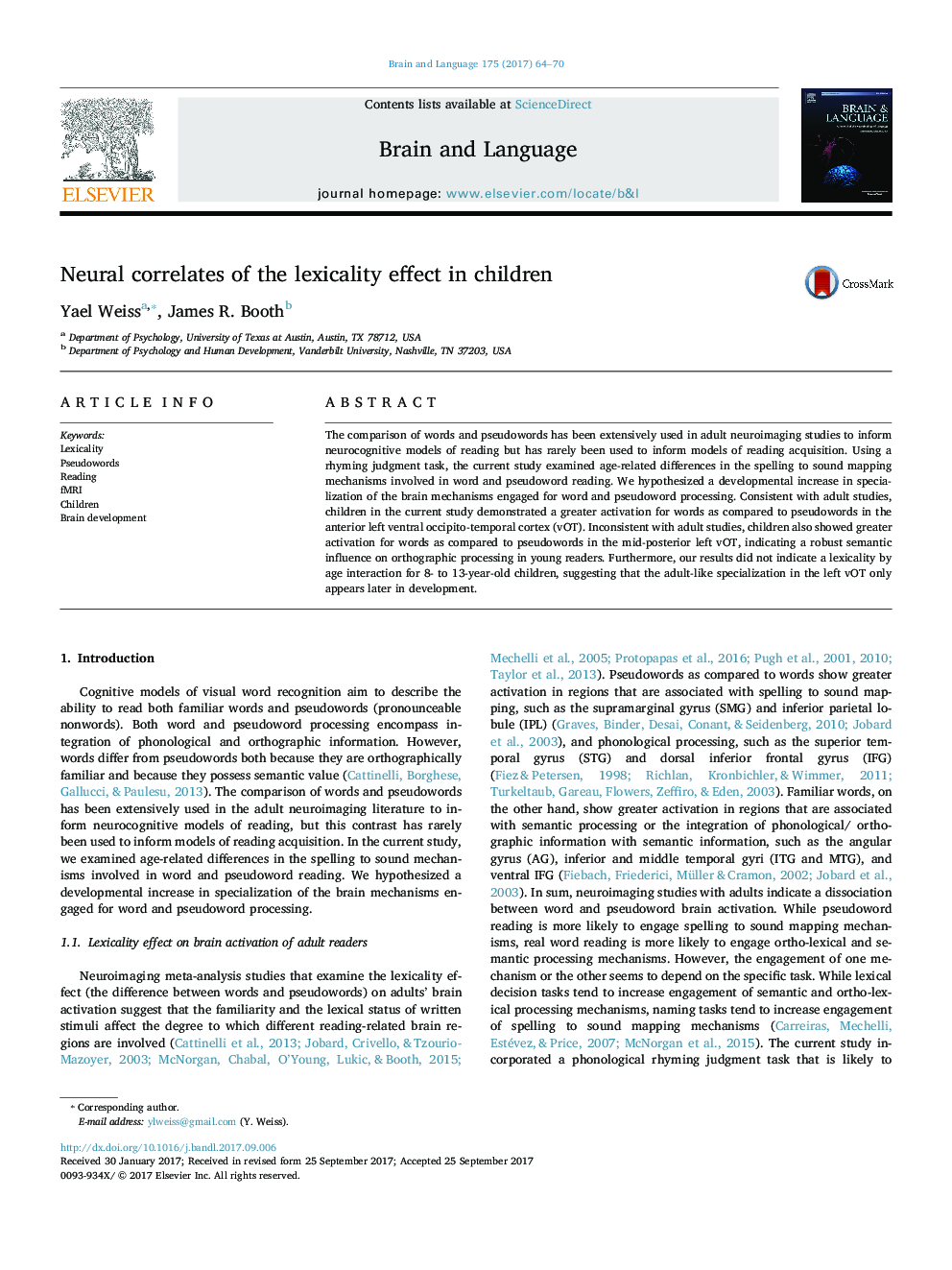| کد مقاله | کد نشریه | سال انتشار | مقاله انگلیسی | نسخه تمام متن |
|---|---|---|---|---|
| 5041226 | 1474009 | 2017 | 7 صفحه PDF | دانلود رایگان |
- Lexicality effect was examined by comparing words to pseudowords in children.
- Greater activation for words was found in anterior and posterior vOT.
- The anterior, not posterior, effects are consistent with previous adult studies.
- The posterior vOT results suggest a robust semantic influence in children.
- Children may use semantic information to help map graphemes to phonemes.
The comparison of words and pseudowords has been extensively used in adult neuroimaging studies to inform neurocognitive models of reading but has rarely been used to inform models of reading acquisition. Using a rhyming judgment task, the current study examined age-related differences in the spelling to sound mapping mechanisms involved in word and pseudoword reading. We hypothesized a developmental increase in specialization of the brain mechanisms engaged for word and pseudoword processing. Consistent with adult studies, children in the current study demonstrated a greater activation for words as compared to pseudowords in the anterior left ventral occipito-temporal cortex (vOT). Inconsistent with adult studies, children also showed greater activation for words as compared to pseudowords in the mid-posterior left vOT, indicating a robust semantic influence on orthographic processing in young readers. Furthermore, our results did not indicate a lexicality by age interaction for 8- to 13-year-old children, suggesting that the adult-like specialization in the left vOT only appears later in development.
Journal: Brain and Language - Volume 175, December 2017, Pages 64-70
